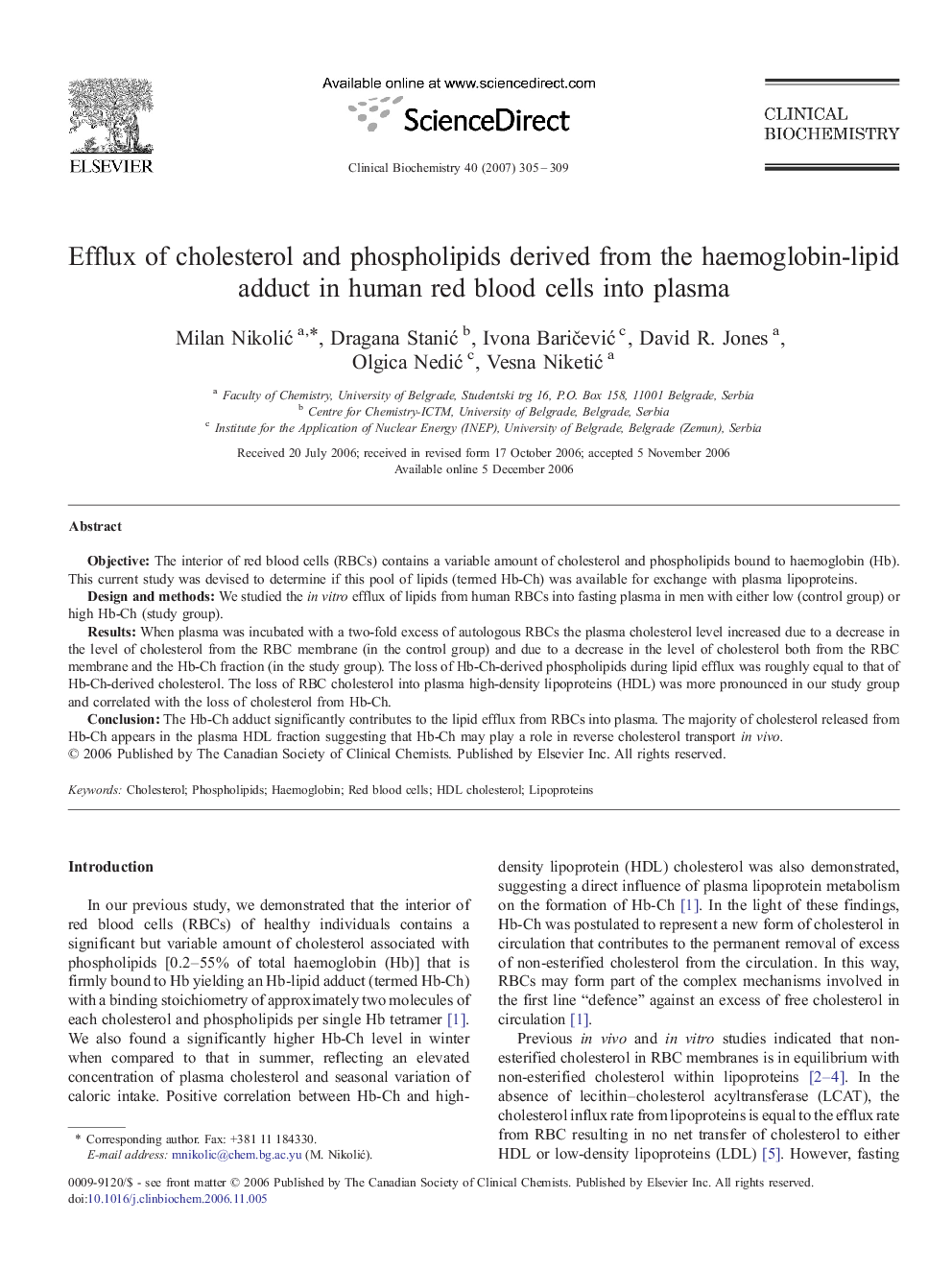| Article ID | Journal | Published Year | Pages | File Type |
|---|---|---|---|---|
| 1970292 | Clinical Biochemistry | 2007 | 5 Pages |
Objective:The interior of red blood cells (RBCs) contains a variable amount of cholesterol and phospholipids bound to haemoglobin (Hb). This current study was devised to determine if this pool of lipids (termed Hb-Ch) was available for exchange with plasma lipoproteins.Design and methods:We studied the in vitro efflux of lipids from human RBCs into fasting plasma in men with either low (control group) or high Hb-Ch (study group).Results:When plasma was incubated with a two-fold excess of autologous RBCs the plasma cholesterol level increased due to a decrease in the level of cholesterol from the RBC membrane (in the control group) and due to a decrease in the level of cholesterol both from the RBC membrane and the Hb-Ch fraction (in the study group). The loss of Hb-Ch-derived phospholipids during lipid efflux was roughly equal to that of Hb-Ch-derived cholesterol. The loss of RBC cholesterol into plasma high-density lipoproteins (HDL) was more pronounced in our study group and correlated with the loss of cholesterol from Hb-Ch.Conclusion:The Hb-Ch adduct significantly contributes to the lipid efflux from RBCs into plasma. The majority of cholesterol released from Hb-Ch appears in the plasma HDL fraction suggesting that Hb-Ch may play a role in reverse cholesterol transport in vivo.
